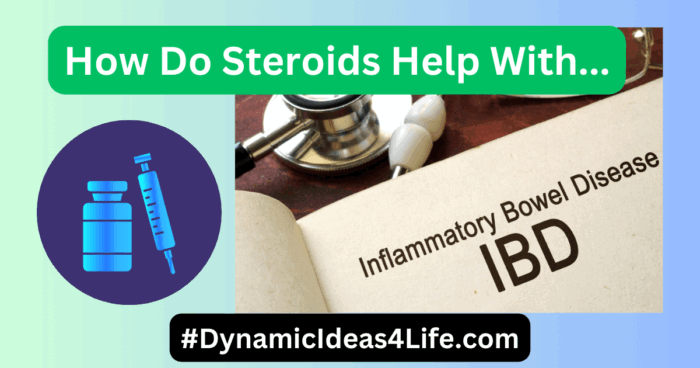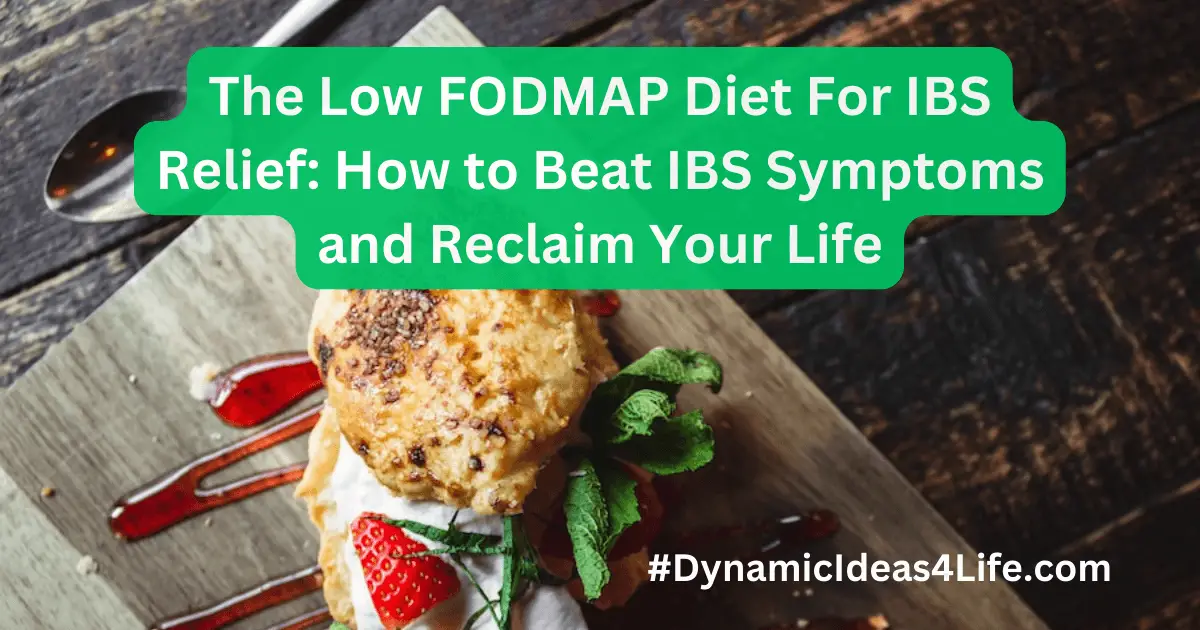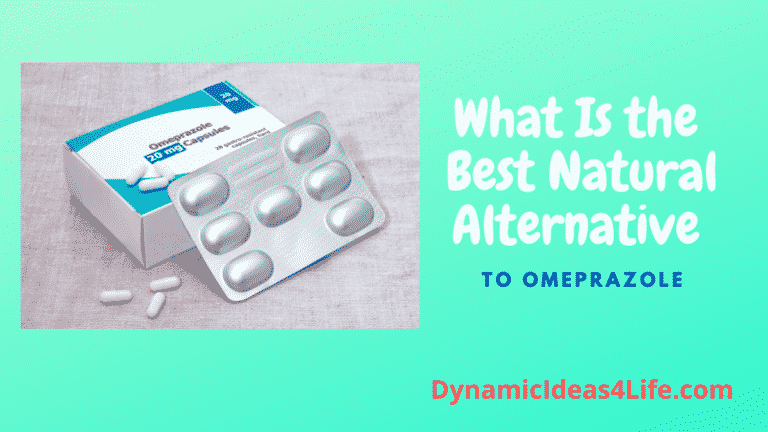The low FODMAP diet for IBS Relief has emerged as a breakthrough treatment for individuals suffering from irritable bowel syndrome (IBS). This dietary approach has revolutionized the way IBS is managed, providing relief for many who have struggled with debilitating symptoms for years.
By understanding the role of FODMAPs in the digestive system and adopting a low FODMAP diet, individuals with IBS can experience significant improvements in their quality of life.
Understanding the Low FODMAP Diet For IBS Relief
The low FODMAP diet is a dietary approach that involves restricting the intake of certain carbohydrates known as FODMAPs. FODMAP stands for Fermentable Oligosaccharides, Disaccharides, Monosaccharides, and Polyols. These carbohydrates are poorly absorbed in the small intestine and can cause digestive symptoms such as bloating, gas, abdominal pain, and diarrhea in individuals with IBS.
The breakthrough nature of the low FODMAP diet lies in its ability to target the root cause of IBS symptoms. By reducing the intake of high-FODMAP foods, individuals can alleviate their symptoms and regain control over their digestive health.
Many individuals who have adopted the low FODMAP diet have reported significant improvements in their symptoms, allowing them to lead more normal lives.
What is FODMAP and How Does it Affect Your Digestive System?
FODMAPs are a group of carbohydrates that are found in a wide range of foods. They include fructose (found in fruits and honey), lactose (found in dairy products), fructans (found in wheat, onions, and garlic), galactooligosaccharides (found in legumes), and polyols (found in certain fruits and artificial sweeteners).
These carbohydrates are poorly absorbed in the small intestine and can pass into the large intestine where they are fermented by gut bacteria.
The fermentation of FODMAPs in the large intestine leads to the production of gas and other byproducts, which can cause symptoms such as bloating, gas, and abdominal pain.
In individuals with IBS, the sensitivity of the gut to these byproducts is heightened, leading to more severe symptoms. By reducing the intake of high-FODMAP foods, individuals can minimize the fermentation process and alleviate their symptoms.
Unraveling the Link Between FODMAPs and IBS Symptoms
The link between FODMAPs and IBS symptoms has been extensively studied and researched. Multiple studies have shown that a high intake of FODMAPs can exacerbate symptoms in individuals with IBS. In fact, research has found that up to 75% of individuals with IBS experience symptom relief when following a low FODMAP diet.
The connection between FODMAPs and common IBS symptoms is clear. The fermentation of FODMAPs in the large intestine leads to the production of gas, which can cause bloating and distension.
Additionally, the byproducts of fermentation can stimulate the nerves in the gut, leading to pain and discomfort. By reducing the intake of high-FODMAP foods, individuals can minimize these effects and experience relief from their symptoms.
The Science Behind the Low FODMAP Diet
The low FODMAP diet works by reducing the intake of high FODMAP foods, thereby minimizing the fermentation process in the gut. This reduction in fermentation leads to a decrease in gas production and a decrease in the stimulation of gut nerves, resulting in a reduction in symptoms.
Additionally, research has shown that individuals with IBS have an imbalance in their gut bacteria, with an overgrowth of certain types of bacteria.
These bacteria are particularly efficient at fermenting FODMAPs, leading to an increase in symptoms. By reducing the intake of high FODMAP foods, individuals can starve these bacteria and restore a healthier balance in their gut microbiome.
Getting Started with the Low FODMAP Diet
Adopting the low FODMAP diet involves two main phases: the elimination phase and the reintroduction phase. During the elimination phase, individuals remove all high-FODMAP foods from their diet for a period of 2-6 weeks. This allows the gut to settle and symptoms to improve.
After this initial period, individuals can begin the reintroduction phase, where they gradually reintroduce FODMAPs back into their diet to identify trigger foods.
The elimination phase can be challenging as it requires a significant change in dietary habits. However, with proper guidance and support, individuals can successfully navigate this phase and experience relief from their symptoms.
Note: Still, It is important to work with a healthcare professional or registered dietitian who specializes in the low FODMAP diet to ensure that the diet is followed correctly and that nutritional needs are met.
Building a Low FODMAP Pantry for IBS-Friendly Meals
Building a low-FODMAP pantry is essential for successfully following the low-FODMAP diet. It is important to have a variety of low-FODMAP ingredients on hand to create flavorful and nutritious meals.
Some pantry staples for a low FODMAP diet include gluten-free grains such as rice, quinoa, oats, herbs, and spices, low FODMAP fruits such as berries and citrus fruits, and lactose-free dairy products.
Stocking a low FODMAP pantry does not have to be expensive. Many low-FODMAP ingredients are readily available and affordable. It is also helpful to plan meals ahead of time and make a shopping list to ensure that all necessary ingredients are on hand.
Additionally, buying in bulk and taking advantage of sales can help save money when stocking a low FODMAP pantry.
Tips for Finding Low FODMAP Foods When Grocery Shopping
Navigating the grocery store can be overwhelming when following the low FODMAP diet, as many common foods contain high FODMAP ingredients. However, with some knowledge and preparation, it is possible to find low-FODMAP alternatives to these foods.
When shopping, it is important to read food labels carefully to identify high FODMAP ingredients. Ingredients such as wheat, onions, garlic, and certain sweeteners should be avoided or limited.
It is also helpful to familiarize oneself with low FODMAP food lists and guides, which can provide guidance on which foods are safe to consume.
Nutritious Recipes and Meal Ideas for the Low FODMAP Diet
Following the low FODMAP diet does not mean sacrificing flavor or nutrition. There are plenty of delicious and nutritious recipes that can be enjoyed while following this dietary approach.
Some examples include a quinoa salad with grilled chicken and vegetables, a stir-fry with tofu and low-FODMAP vegetables, and a berry smoothie made with lactose-free yogurt.
When creating low-FODMAP meals, it is important to focus on incorporating a variety of low-FODMAP ingredients to ensure a balanced diet. This includes lean proteins, gluten-free grains, low FODMAP fruits and vegetables, and lactose-free dairy products.
It is also helpful to experiment with herbs and spices to add flavor without adding high FODMAP ingredients.
How to Maintain the Low FODMAP Diet in Social Situations
Maintaining a low FODMAP diet in social situations can be challenging, as many social gatherings revolve around food. However, with some planning and communication, it is possible to navigate these situations successfully.
When dining out, it is helpful to research the menu ahead of time and identify low FODMAP options. It is also important to communicate dietary needs to the restaurant staff and ask for modifications if necessary.
Bringing a small snack or meal to social gatherings can also be helpful to ensure that there are safe options available.
When communicating dietary needs to friends and family, it is important to be open and honest about the reasons for following the low FODMAP diet. Providing educational resources and explaining the impact of certain foods on symptoms can help others understand and support dietary choices.
Maintaining a Healthy Gut and Managing IBS Symptoms
Maintaining a healthy gut is essential for long-term success in managing IBS symptoms. While the low FODMAP diet can provide relief, it is important to also focus on other aspects of gut health.
One way to support gut health is by consuming a variety of fiber-rich foods. While some high FODMAP foods are restricted during the elimination phase, it is important to gradually reintroduce fiber-rich foods during the reintroduction phase. This can help promote healthy digestion and prevent constipation.
Additionally, managing stress levels and practicing relaxation techniques can also support gut health. Stress has been shown to exacerbate IBS symptoms, so finding ways to manage stress can be beneficial. This can include activities such as yoga, meditation, or engaging in hobbies that promote relaxation.
In Conclusion
The low FODMAP diet has emerged as a breakthrough treatment for individuals suffering from IBS. By understanding the role of FODMAPs in the digestive system and adopting a low FODMAP diet, individuals with IBS can experience significant improvements in their symptoms and regain control over their digestive health.
While following the low FODMAP diet may require some adjustments and planning, the benefits are well worth it. It is important to seek guidance from healthcare professionals or registered dietitians who specialize in the low FODMAP diet to ensure that the diet is followed correctly and that nutritional needs are met.


Anxiety and Depression best ways to lower blood sugar BiOptimizers blood pressure supplements blood sugar support supplements Digestive Enzymes Supplement digital products Dr Sam Robbins Exercise Gut Health Healthy Living heart health HFL how to lower blood sugar levels How To Lower Cholesterol how to strengthen the immune system insulin resistance joint health supplement Keto keto dieting Keto Diet Weight Loss leaky gut supplements leptin resistance list Magnesium deficiency Matt Gallant mental health multivitamins Nootropics nutrient supplements Probiotics Probiotic Supplements proteolytic enzymes reverse type 2 diabetes stress and anxiety stress relief vitabalance vitamin c vitapost Wade Lightheart weight loss articles weight loss diet plans weight loss product reviews weight loss supplements weight loss tea






